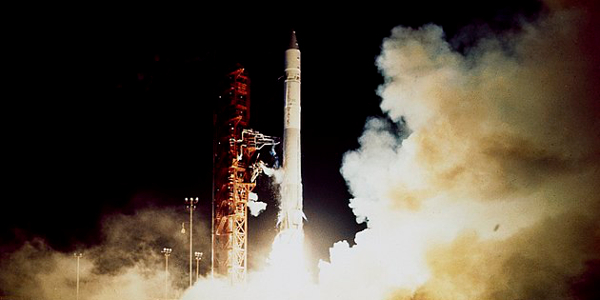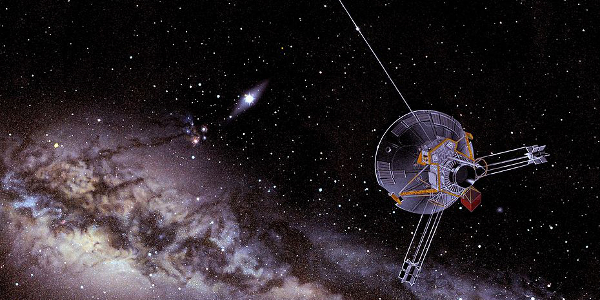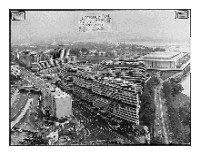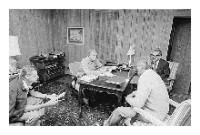Click here to Sponsor the page and how to reserve your ad.
-
Timeline
1979 - Detail
September 1, 1979 - The American Pioneer Eleven passes the planet Saturn, becoming the first spacecraft to visit the ringed planet, albeit at a distance of 21,000 kilometers.

It had been launched on the Atlas Centaur rocket on April 6, 1973, this American Pioneer Eleven spacecraft, the first designed to exit our galaxy and explore past those borders. The mission had been approved in 1969 to design two spacecraft, Pioneer Ten and Eleven, that could explore past Mars, through the asteroid belt, and beyond Jupiter. As the mission came closer to launch, those goals were expanded to the Saturn aspect for Pioneer Eleven, and what would occur thereafter.
For Saturn, however, NASA wanted to map the magnetic field and interaction of the planet with its solar wind, measure its temperature as well as that of Titan, its largest satellite, and determine its atmospheric structure. Yes, these were lofty goals for the first spacecraft that would travel that far.
Pioneer Ten had been launched March 2, 1972 with its mission to explore Jupiter. By the time Pioneer Eleven was ready to launch, Pioneer Ten had passed through the asteriod belt, but not yet reached Jupiter. It was still unknown what that mission would eventually hold. The Pioneer Eleven spacecraft was small, two hundred and sixty kilograms or five hundred and seventy-three pounds, hexagonal in design, nine feet in diameter, built by the firm TRW. It carries a message on a plaque for any intelligent beings that may encounter it. The plaque, the idea of Carl Sagan, is a visual representation. It includes the depiction of a naked man, waving hello, and a naked woman, plus a representation of where our planet is located in the galaxy.
Pioneer Eleven launched directly toward Jupiter on April 6, 1973, and was retargeted to fly past Jupiter toward Saturn one year later.

What Pioneer Eleven Found Out About Saturn
Pioneer Eleven reached first contact with Saturn on August 31, 1979 and crossed its ring plane the next day. It was traveling at 71,000 MPH at this time. Forty-four images of the planet were taken. Saturn's moon Titan gained an average temperature of Minus 315 degrees Fahrenheit while the planet itself was Minus 292 degrees. Its atmosphere was primarily composed of liquid hydrogen. New discoveries included the founding of an additional ring, Ring F, outside the A Ring, and an additional moon or satellite measuring two hundred and forty miles in diameter.

Timeline of the Pioneer Eleven Mission
April 6, 1973 - Pioneer Eleven launches on Atlas-Centaur rocket, achieving a speed of 32,000 MPH.
March 1974 - Passes through asteroid belt without damage.
April 11 and April 26, 1974 - Midcourse corrections to flight pattern that would bring it closer to Jupiter and allow a polar flyby.
December 3, 1974 - Achieves closest approach to Jupiter, 26,400 miles (three times closer than Pioneer Ten). It was now traveling at the highest speed of any man-made object, 106,000 MPH.
May 26, 1976, and July 13, 1978 - Additional trajectory corrections enabled Pioneer Eleven to continue toward Saturn.
September 1, 1979 - Crossed Saturn's ring plane. It would subsequently leave Saturn's orbit in the opposite direction of Pioneer Ten, heading toward Sagittarius.
February 23, 1990 - Pioneer Eleven crossed the orbit of Neptune, an accomplishment previously done by Pioneer Ten, Voyager One, and Voyager Two.
September 30, 1995 - NASA made last contact with Pioneer Eleven. It was 44.1 AU (Astronomical units) from earth. Each AU equals 93 million miles. These words from a Press Release dated September 29, 1995, state its legacy per NASA.
"After nearly 22 years of exploration out to the farthest
reaches of the Solar System, one of the most durable and
productive space missions in history will come to a close.
Now beyond the orbit of Pluto and more than four billion
miles from Earth, NASA's unmanned Pioneer 11 spacecraft is
heading out into interstellar space. Because the spacecraft's
power is too low to operate its instruments and transmit data,
on September 30 NASA will cease daily communications with the
spacecraft. At that distance, faint signals from Pioneer 11
traveling at the speed of light take over six hours to reach Earth.
The spacecraft will continue speeding out into interstellar
space toward the center of the Milky Way, taking an engraved
gold plaque bearing a message about Earth to other
civilizations which it may encounter. Pioneer 11 will pass
near the star Lambda Aquila in almost four million years.
"Americans should remember Pioneer 11 as a great achievement," said NASA Administrator Daniel Goldin. "This is the little spacecraft that could, a venerable explorer that has taught us a great deal about the Solar System and, in the end, about our own innate drive to learn. Pioneer 11 is what NASA is all about -- exploration beyond the frontier."
"Pioneer 11 has had a spectacular life," said project
manager Fred Wirth of NASA's Ames Research Center, Mountain
View, CA. "It was the second spacecraft to visit Jupiter,
roaring through the heart of the planet's huge radiation belts
at 107,373 mph, by far the fastest speed ever traveled by a
human-made object."
November 24, 1995 - NASA receives last engineering data from the spacecraft.
November 5, 2017 - Pioneer Eleven was estimated to be 97.59 AU from earth, 9.1 billion miles, and expected to continue toward the end of our solar system and enter the space of interstellar medium, the space beyond our solar system. Its course is toward the constellation Aquila, northwest of Sagittarius, and will take four million years to reach it. Pioneer Eleven is no longer the most distant man-made object, overtaken by the 1997 launched Voyager I and II. Voyager I is now the most distant from Earth.
Photo above: Launch of the American Pioneer Eleven, 1973, NASA Marshall Space Flight Center. Courtesy NASA, Wikipedia Commons. Below: Drawing of the Pioneer Eleven in Outer Space, 2010, NASA Ames. Courtesy NASA, Wikipedia Commons. Source Info: NASA; "Pioneer 11 to End Operations After Epic Career," September 29, 1995 NASA Press Release; Wikipedia Commons.






